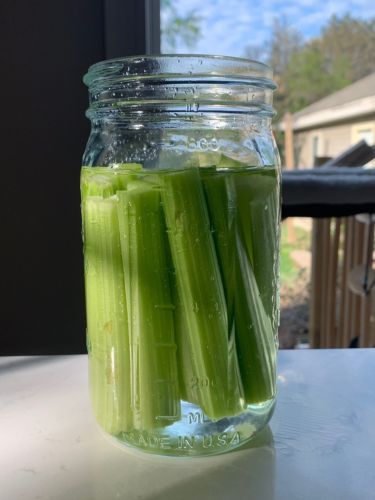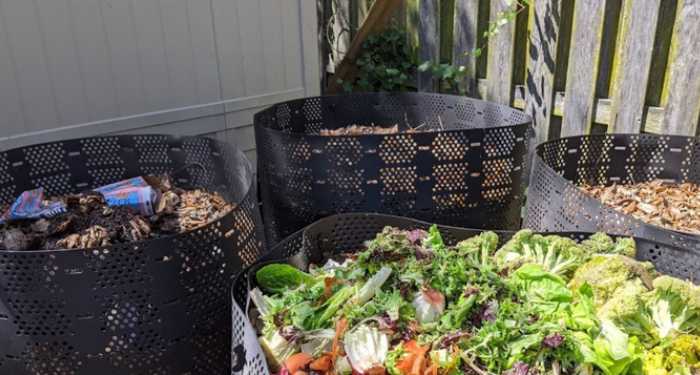How to Reduce Household Food Waste
Posted August 31, 2022Have you ever thought about how much food you throw away daily? Most people are not aware of how much food they throw away during a typical day, but when you stop to consider the cumulative effect of even a small amount over the course of a year, and then multiply this times the population size of your hometown or city, the amount adds up really quickly, and can be downright staggering.
According to the Environmental Protection Agency (EPA), more food reaches landfills and combustion facilities than any other single material in everyday household trash, with the average U.S. household wasting nearly 40% of its food. Unsurprisingly, food waste comprises approximately 23% of the waste landfilled and 22% of the waste combusted with energy recovery.
With the rising cost of food in the U.S., minimizing food waste is an opportunity for many Americans to reduce their monthly grocery bill. According to a Forbes report, food waste costs the average U.S. household nearly $2,000 annually.
Excess food waste also negatively impacts the environment due to increased greenhouse emissions and energy consumption. The good news is there are ways to reduce food waste to save money and work toward a more resilient and climate-smart food system.
Here are five simple ways to reduce food waste.
-
Only Buy What You Need
The grocery store is full of temptation, but being prepared with a list can help you avoid impulse purchases. Before heading to the grocery store, sit down and make a plan for the week. Luckily, there are countless resources online, including meal planning calculators and recipes.
-
Properly Store Perishable Items to Last Longer
 After a tiring trip to the grocery store, it can be tempting to get home and toss everything in the refrigerator in its original packaging, but taking some time to transfer your produce to proper storage containers can extend its freshness.
After a tiring trip to the grocery store, it can be tempting to get home and toss everything in the refrigerator in its original packaging, but taking some time to transfer your produce to proper storage containers can extend its freshness.
Storage Tips
- Store carrots and celery in a glass container filled with water. Doing this will keep them fresh and crisp for up to three weeks. Be sure to refresh the water as needed. This system also works well for herbs like cilantro, chives, and basil. Herbs will stay fresh up to three times longer when stored in water in the refrigerator.
- Some fruits, such as avocados, bananas, stone fruits, and apples, release ethylene gas as they ripen, causing nearby produce to ripen more quickly. Store these items away from other fresh produce.
- Store vegetables prone to wilting in the high-humidity drawer of the refrigerator. Most fruits—and vegetables that tend to rot—should go in the low-humidity drawer.
-
Repurpose Leftover Food
You can easily reduce waste and save money by repurposing leftover food. Often, we may think food is ready to be thrown away when it can be used in tasty recipes. For instance, you can use stale bread to make croutons or breadcrumbs, which both have a longer shelf life. Wilted vegetables can be turned into a hearty stew or used to make vegetable stock.
Overripe fruits and vegetables are great for making smoothies or fresh juice. You can make a nutrient-dense smoothie by adding your favorite ingredients to a blender, then topping with granola or chia seeds. If smoothies aren’t your thing, you can make fresh fruit juices with near-expired produce. You don’t even need an expensive juicer to make fresh juice—it’s easy to do with a blender and mesh strainer.
Many vegetables can be regrown in water to provide you with an endless supply of fresh veggies and herbs with very little work or investment. This is very easy to do with lettuce, green onion, cilantro, and basil.
-
Freeze Produce Before It Goes Bad
When you have fruits or vegetables that you will not use before they go bad, freeze them to use later. Reynolds freezer bags work well to safely store produce and prevent freezer burn. Frozen fruit like bananas and berries are great for smoothies or desserts.
You can also freeze extra tomato sauce/paste, soup stock, and canned vegetables like hot peppers. You will thank yourself later when you need a small amount of these items for a meal you are preparing.
-
Compost Food Waste

When household food waste is unavoidable, composting is a great way to divert organic material from landfills. Parts of food that cannot be eaten and are typically discarded can be composted, including fruit and vegetable scraps, eggshells, and used coffee grounds.
Compost is decomposed organic matter that makes a great soil amendment to promote healthy plant growth. The process of composting is an aerobic method, which means it requires the presence of air to decompose organic solid waste.
Composting organisms require four equally important ingredients:
- Carbon (Browns): provides energy
- Nitrogen (Greens): assists in growing and reproducing more organisms to oxidize the carbon
- Oxygen: oxidizes the carbon, which facilitates the decomposition process
- Water: helps with decomposition and keeps the pile’s temperature regulated
Composting not only provides a nutrient-dense soil amendment for your garden, but it diverts organic waste from landfills where it releases methane gas. To learn more about composting, check out our Beginner’s Guide to Composting.

